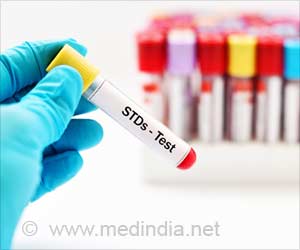
If current trends continue, the study suggests HPV-related oropharyngeal will become the major form of head and neck cancer and the leading HPV-associated cancer, surpassing cervical cancer, by 2020.
“These increases may reflect increases in sexual behavior, including increases in oral sex,” said senior author Maura Gillison, MD, PhD, professor of medicine and Jeg Coughlin Chair of Cancer Research at The Ohio State University Comprehensive Cancer Center in Columbus.
The oropharynx is the middle part of the throat behind the mouth, and includes the base of the tongue, the soft palate, the side and back walls of the throat and the tonsils. Oropharyngeal cancer is the second virus-related head and neck cancer known, with the other being nasopharyngeal cancer (Epstein-Barr virus).
Previous studies have shown that oropharyngeal cancers can be divided into two separate diseases with distinct causes: HPV-negative cancers, which are associated with tobacco and alcohol use; and HPV-positive cancers, which are linked to certain types of HPV, a sexually transmitted virus. Patients with HPV-positive oropharyngeal cancer also tend to be younger than those who are HPV-negative. Clinically, patients with HPV-positive cancer tend to have better survival compared to those with HPV-negative disease.
“We used to think of oropharyngeal cancer as one cancer, and now we know the disease is comprised of two biologically and epidemiologically distinct cancers. This new understanding will increasingly enable us to improve and better personalize care for patients with each form of the disease,” the researchers said.
Advertisement
To determine the role of HPV infection in these trends, researchers tested 271 archived oropharynx cancer tissue samples (from 5,755 patients) for HPV infection collected between 1984 and 2004 at three population-based cancer registries located in Hawaii, Iowa and Los Angeles in the National Cancer Institute’s Surveillance, Epidemiology and End Results (SEER) Residual Tissue Repositories Program. Using a variety of molecular assays, the investigators showed that the proportion of oropharynx cancers that were HPV-positive dramatically increased over time, from 16.3 percent for cancers diagnosed during the 1980s (1984 to 1989) to 72.7 percent for cancers diagnosed during the 2000s (2000 to 2004).
Advertisement
Gillison noted that approximately 90 percent to 95 percent of HPV-positive oropharynx cancers were caused by one HPV type – HPV16, which is targeted by currently available vaccines for cervical cancer prevention. “But with HPV vaccines, we have a great opportunity to potentially prevent oropharynx cancers in future generations – including in boys and men – but studies need to be done to evaluate the efficacy of HPV vaccines in preventing oral HPV infections.”
The authors said that patients with HPV-positive disease generally have a better prognosis than those with HPV-negative disease, and that radiation – in addition to chemotherapy – has a particularly strong impact on long-term outcomes. By contrast, for HPV-negative patients, there have been few treatment advances in 20 years that have led to improved survival.
The findings are published in the Journal of Clinical Oncology.
Source-Medindia












